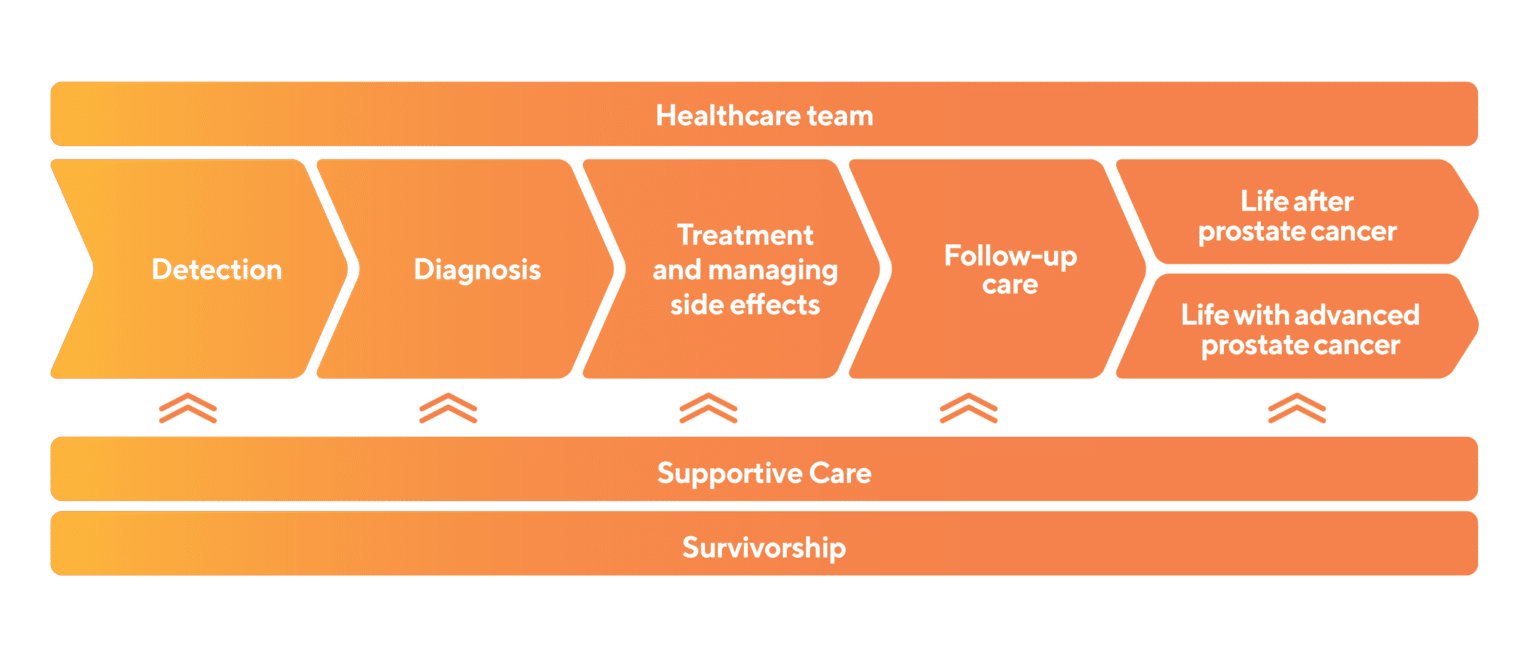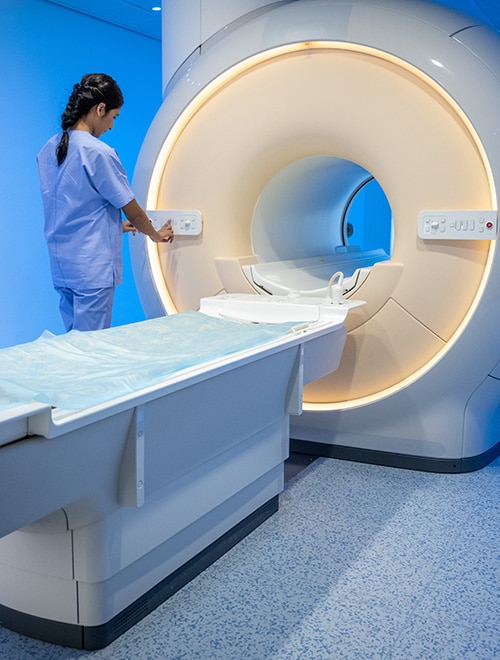- 5 min read
Prostate cancer diagnosis in Australia
Prostate cancer is the most commonly diagnosed cancer in Australia with over 24,000 men diagnosed each year, or around 70 men every day. Australian men have a 1 in 5 risk of being diagnosed with prostate cancer by the time they reach 85 years old. This also includes transgender women, male-assigned non-binary people or intersex people. Anyone with a prostate is at risk of this disease.
The risk of having prostate cancer over a lifetime is 17%. The risk of dying from it is only 3%. Research, early detection and improved treatments will help increase the chances of surviving prostate cancer.
Early detection and diagnosis are an important part of reducing the death rates for men from prostate cancer. While over 3,700 men die every year from this disease, it’s important to remember that many more men survive. If you have been diagnosed, you now have a 95% chance of living 5 years after diagnosis (compared to 60% in the 1980s) and a 91% chance of living beyond 10 years.
Working out if you have prostate cancer is a complex fact-finding process involving many diagnostic tests and examinations. This tool kit will help you and your family understand the process and know what to expect. We will also tell you about the different experts and health professionals you are likely to encounter who, together with your GP, will form your healthcare team, also called your multidisciplinary team.
Detection and diagnosis of prostate cancer – what’s involved?
There are several tests, procedures and scans that may be used to determine if you have prostate cancer. These include:
A biopsy is the only way to definitively diagnose prostate cancer. It involves a surgical procedure where the urologist takes small tissue samples from your prostate. As with all surgeries there are risks involved so your doctor or urologist will do several tests and scans first to work out for certain if you need the biopsy.
PSA testing – a simple blood test
PSA testing is the first step to work out if there is an issue with your prostate. It’s a simple blood test that measures the level of a protein called prostate-specific antigen (PSA) in your blood. Ask your doctor about PSA testing if you are over the age of 50 or if you are younger and have high risk factors or symptoms.
If your PSA levels are high for your age, there might be an issue with your prostate. Your doctor may recommend further tests to determine if cancer or something else is causing the high levels of PSA. You can read more about this test in the PSA Testing section of this toolkit.
Digital rectal examination – a physical examination
A digital rectal examination (or DRE) is a physical examination performed by your urologist to check the size and texture of your prostate to feel if there are any signs of cancer. This test doesn’t diagnose prostate cancer but combined with your PSA test results may help guide your next steps. It’s a good idea to find out what happens in a digital rectal examination if your doctor has recommended this for you. Not all men will need a DRE.
Imaging tests – scans of your body to detect abnormalities
Imaging tests are used to provide detailed images of the inside of your body. They can be used to check your prostate for any abnormalities before you are diagnosed with cancer.
After diagnosis, they can be used to determine the stage of the cancer which describes if the cancer has spread out of the prostate to nearby areas and/or to other parts of the body.
After considering your risk factors and your previous test results, your doctor will talk to you about which imaging test is best for you. They may recommend one or more of the following:
- Magnetic resonance imaging (MRI)
- Computerised tomographic (CT) scan
- Whole-body bone scan
- PSMA PET/CT scan
These scans sound complicated, but they are generally painless and straightforward. Find out more about each of these imaging tests, what they are for and what information they can give you and your doctor.
Biopsy – diagnosing prostate cancer
Only a biopsy can provide a definitive diagnosis of prostate cancer. It involves a surgical procedure where the urologist takes small tissue samples from your prostate. As with all surgeries there are risks involved so your doctor or urologist will do several tests and scans first to determine if you need a biopsy. They will then discuss the results with you and together you will decide whether or not to have a biopsy. Before making your decision make sure you ask your urologist all the questions you need so that you know what to expect and feel comfortable with your decision.
If the biopsy result shows that you have cancer, it will also provide information on the grade of the cancer. The cancer grade gives an indication of how fast or slow the cancer is likely to grow. This will help your urologist to determine and recommend the next steps for you.
It’s important to note that although the technology for testing and diagnosing prostate cancer has advanced over the years, it is not perfect. Even a biopsy isn’t 100% fail-safe. If your biopsy result is negative for cancer your urologist may recommend regular PSA testing or other tests to monitor your prostate.
What happens after you have had the tests, scans or biopsy?
Your experience of prostate cancer after diagnosis is unique to you. The cancer experience isn’t the same for everybody, even with the same type of cancer. Based on the results of your tests, scans and biopsy, your doctor will talk to you about your next steps and treatment, if needed.
Finding out you have prostate cancer can be challenging. You may find it helpful to take your partner or someone close to you for support when seeing your doctor. It may also help to write down any questions you have and to make notes of any information your doctor tells you or contact a PCFA nurse for advice.
It can also be useful to think of the cancer experience in different stages. By breaking down what might feel like an overwhelming situation into smaller, more manageable steps, you can take one step at a time.

Can you get a second opinion?
You may want to get a second opinion about your diagnosis. This doesn’t mean you have less faith in your doctor. Talking it through with another doctor or health professional who understands prostate cancer can help clear up some of your concerns and may deepen your understanding of the different treatment and support options available for you.
Key points
- Prostate cancer is the most commonly diagnosed cancer in Australian men.
- Early detection and diagnosis are important for saving lives.
- A biopsy is the only way to definitively diagnose prostate cancer.
- There are various tests, examinations and scans done to detect risk of cancer before a biopsy is recommended.
- No technology or procedure to diagnose cancer is 100% fail-safe.
- The results of your tests, scans and biopsy will guide the next steps and treatment options for you.
- If you are diagnosed with prostate cancer, your healthcare team will provide support and treatment recommendations to help you make the best decision. PCFA nurses are also here to talk through any questions or concerns you have.






